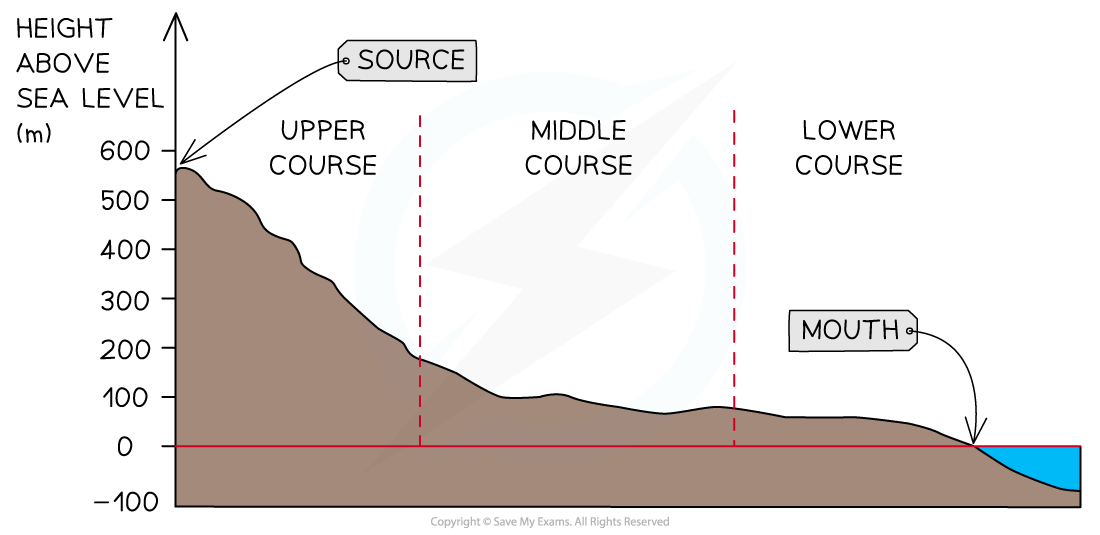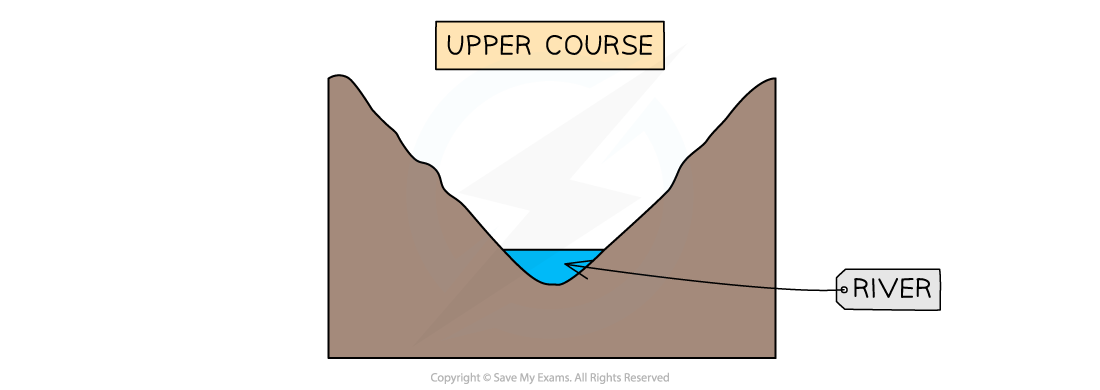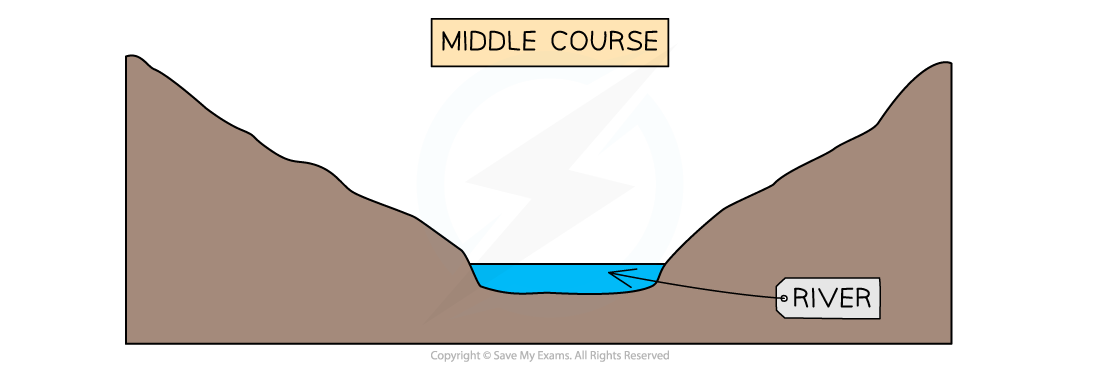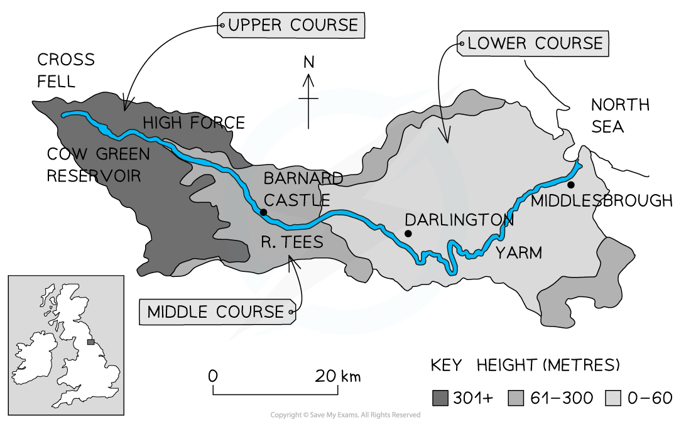Changes in River Characteristics
River characteristics
- All rivers have a long and cross profiles
- Each river's long and cross profiles are unique but they do have some characteristics in common
- These profiles show changes in river characteristics from the source to the mouth
Long profile
- The long profile of a river shows the changes in the river gradient from the source to the mouth
- Most long profiles have a concave shape with similar characteristics:
- The source is usually in an upland area
- The upper course of the river includes areas which are steep with uneven surfaces
- In the middle course the gradient decreases
- In the lower section the gradient decreases further until it becomes almost flat

Long profile
Cross profiles
- The cross profiles of a river are cross-sections from one bank to another
- Cross profiles of the upper, middle and lower courses show the changes in the river channel
- Upper course characteristics include:
- Shallow
- Steep valley sides
- Narrow
- Low velocity
- Large bedload
- Rough channel bed
- High levels of friction
- Vertical erosion

Upper Course
- Middle course characteristics:
- Deeper than upper course channel
- Gentle valley sides
- Wider than upper course channel
- Greater velocity than upper course channel
- Material in river decreases in size
- Smoother channel bed
- Lower levels of friction than upper course channel
- Lateral erosion

Middle Course
- Lower course characteristics:
- Deeper than middle course channel
- Flat floodplains
- Wider than middle course channel
- Greater velocity than middle course channel (apart from as the river enters the mouth)
- Material carried mainly sediment and alluvium
- Smooth channel bed
- Lowest friction
- Deposition is dominant

Lower Course
Exam Tip
Remember valley shape and river shape are not the same thing. If you are asked to describe valley shape you should focus on the gradient and shape of the land either side of the river channel.
Case Study: River Tees
- Location - North-East England
- Drainage basin - 1830km2
- Source - Cross Fell, Pennines 754m above sea level
- Length - 137km
- Mouth - Tees Estuary, North Sea
- Direction of flow - from west to east

Map of River Tees Drainage Basin
| Feature | Upper Course | Middle Course | Lower Course |
| Land Use | Moorland, peat soil, some sheep grazing | Surrounded by farmland and some larger settlements - Barnard Castle | Some arable farmland and increasingly larger settlements and industry - Middlesbrough, Yarm, Stockton on Tees |
| Geology | Limestone and sandstone | Limestone and sandstone | Limestone and sandstone |
| Annual Precipitation | Over 1000mm | 1003mm | 773 mm |
| River Channel | Narrow and shallow | Increasing width and depth | Wide and deep |
| Gradient | Steep | More gentle | Gentle, almost flat |
| Bedload | Large and angular | Becoming smaller and more rounded | Mainly small sediment |
| Friction | High levels of friction | Decreasing amounts of friction as less water is in contact with the banks and bed | Decreasing amounts of friction as less water is in contact with the banks and bed |
| Landforms | High Force waterfall located where hard rock (Dolerite also known as whinstone) overlays soft rock (limestone and sandstone). The retreat of High Force waterfall upstream has left a steep sided gorge. Interlocking spurs and v-shaped valleys | Meanders starting to develop and fertile floodplains either side of the river | Large meanders, leading to the development of oxbow lakes, wide floodplain with levees |
| Erosion & Deposition | Vertical erosion dominant | Lateral erosion dominant | Deposition dominant |
| Other Features | Cow Green Reservoir | Tees Barrage flood defence, river straightening in Middlesbrough (Mandale Loop), Yarm flood defences
|
转载自savemyexams










